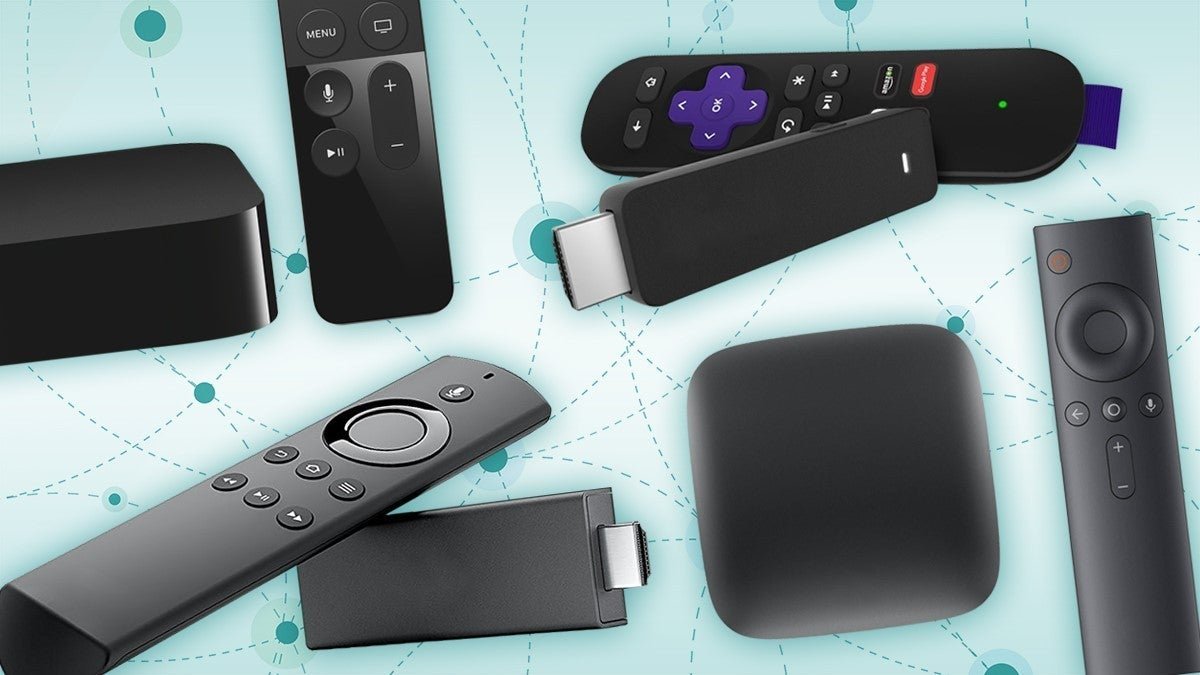
Image: Rob Schultz/TechHive
Nope, you don’t have to settle for the streaming apps on your smart TV. If you’re looking for a better video-streaming experience, you can scoop up a streaming player from the likes of Apple, Amazon, Roku, Google, and others. Just plug the player into TV’s HDMI port, and you’ll be able to use apps like Netflix and Hulu, possibly with a faster and smoother experience than your TV’s built-in software.
The good news about streaming media players is that there’s a wide range of devices to choose from. The bad news? All those streaming choices can be a bit overwhelming. Should you grab a $20 streaming stick from Roku, or cough up more than $100 for a feature-packed Apple TV? There’s also a bewildering number of choices in between, from Amazon’s 4K Fire TV players to the Google TV Streamer, which doubles as a smart hub.
Never fear. We’ve spent hundreds of hours testing the top streaming players from all the big manufacturers, including Apple, Amazon, Roku, Google, and more, and we have device recommendations for every budget.
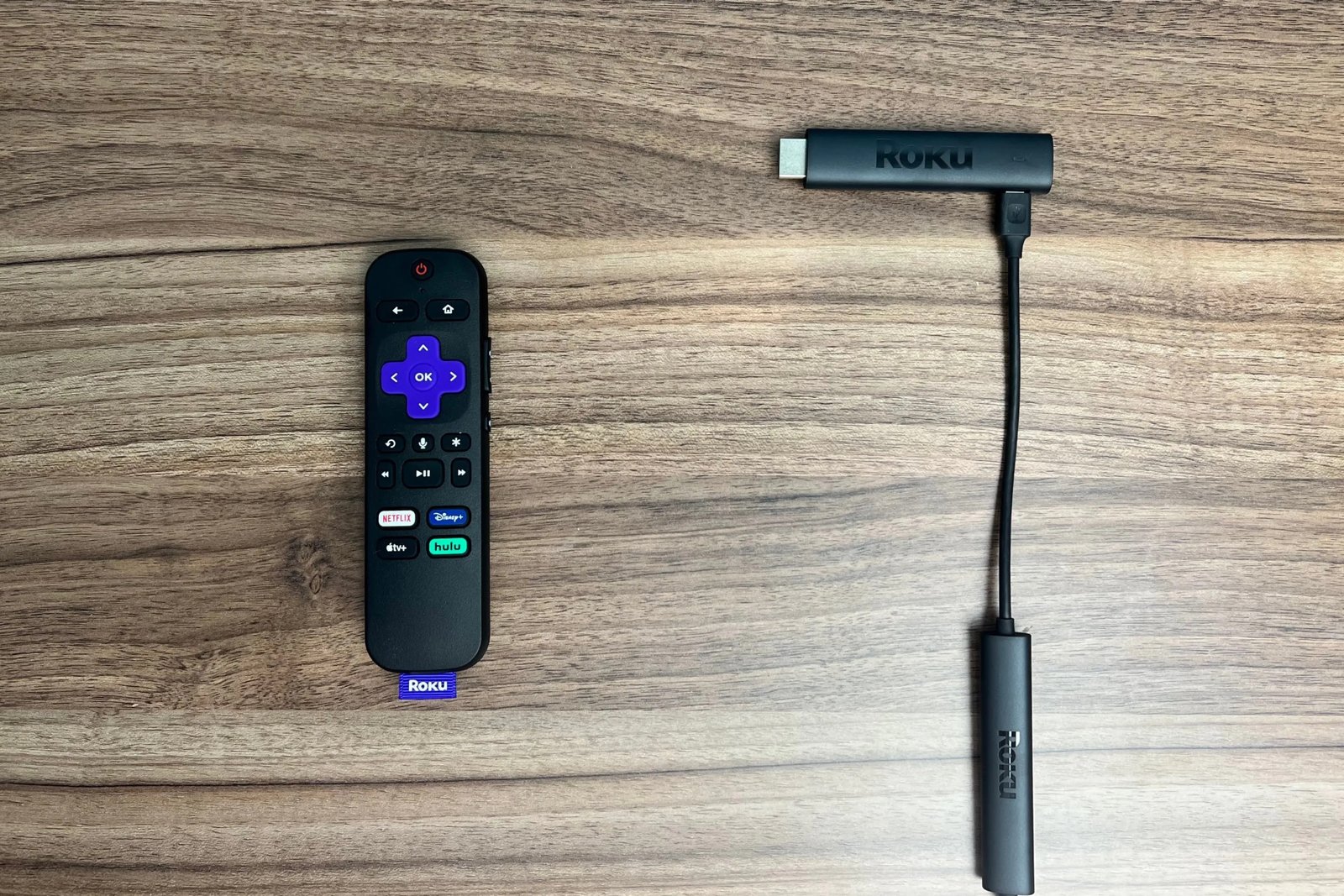
Pros
- Fast, fluid performance
- Easy-to-operate interface
- Nice touches like AirPlay and a Replay button
Cons
- Discovering shows could be easier
- No Dolby Atmos or IR control
- No ethernet port
Price When Reviewed:
£49.99
Best Prices Today:

Who should buy the Roku Streaming Stick 4K?
While other streaming platforms are more aggressive about recommending movies and shows directly from the home screen, Roku’s main menu is still a traditional grid of app icons, akin to what you’d see on a smartphone. It’s indicative of how Roku values simplicity above all else. If you feel the same way, the Roku Streaming Stick 4K is for you.
Roku Streaming Stick 4K: Further considerations
Roku still offers the simplest platform for streaming, and it’s loaded with thoughtful touches, including the “Replay” button that jumps back 10 seconds and temporarily turns on closed captions. At $50 (and often on sale for less), the Streaming Stick 4K hits the sweet spot in Roku’s device lineup, with a better remote than Roku’s entry-level models and the same Dolby Vision support as the $100 Roku Ultra. It narrowly beats out the $40 Roku Express 4K+, which lacks Dolby Vision HDR support and has a less-portable design.
Read our full
Roku Streaming Stick 4K review
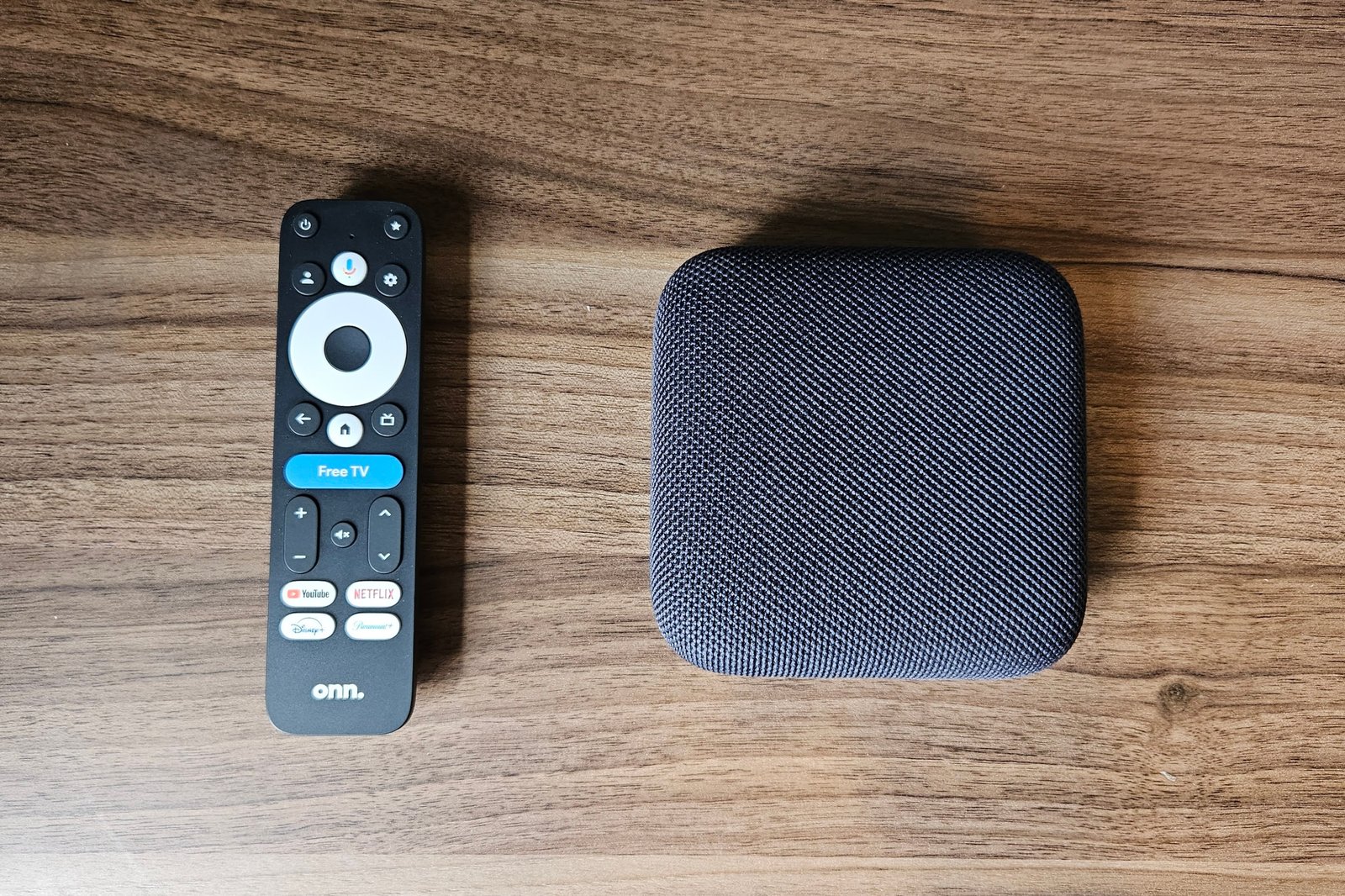
Pros
- Excellent performance for the price
- Remote is loaded with useful features
- Google TV is great for finding things to watch
Cons
- Hands-free voice control is a bust
- Home screen needs better streaming service tie-ins
- Can’t control volume from your phone while casting
Best Prices Today:

Who should buy the Walmart Onn Google TV 4K Pro?
Like Walmart’s budget-priced media streamer, the Onn Google TV Pro is particularly well suited to TV watchers who are invested in Google’s entertainment ecosystem. This streamer’s remote has dedicated buttons for Google TV’s free streaming channels and YouTube (the latter of which can be remapped to YouTube TV or YouTube Music), as well as preset buttons for Netflix, Disney+, and Paramount+. Home theater buffs, meanwhile, will appreciate the support for Dolby Vision HDR and Dolby Atmos object-based surround sound.
Walmart Onn Google TV 4K Pro: Further considerations
Walmart’s Onn Google TV 4K Pro resets expectations for what a $50 streaming device can deliver. The small box features a chipset that includes a Quad-core Cortex-A55 CPU and Mali-G31 MP3 GPU; 32GB of storage; a Wi-Fi 6 adapter, plus a 100Mbps ethernet port; and a USB-A port for connecting external storage drives, wired game controllers, and other accessories. It comes with a great remote control with backlit buttons–some of which are re-assignable–and the box itself has a remote-finder feature. All that horsepower makes for an extremely responsive user experience, and great voice search features make it easy for you to find what you want to watch. Walmart would like you to think its box is a great smart speaker, too; regrettably, that is its weakest link.
Read our full
Walmart Onn Google TV 4K Pro review
Walmart Onn 4K Google TV Streaming Box (2023 model) – Best budget-priced streamer
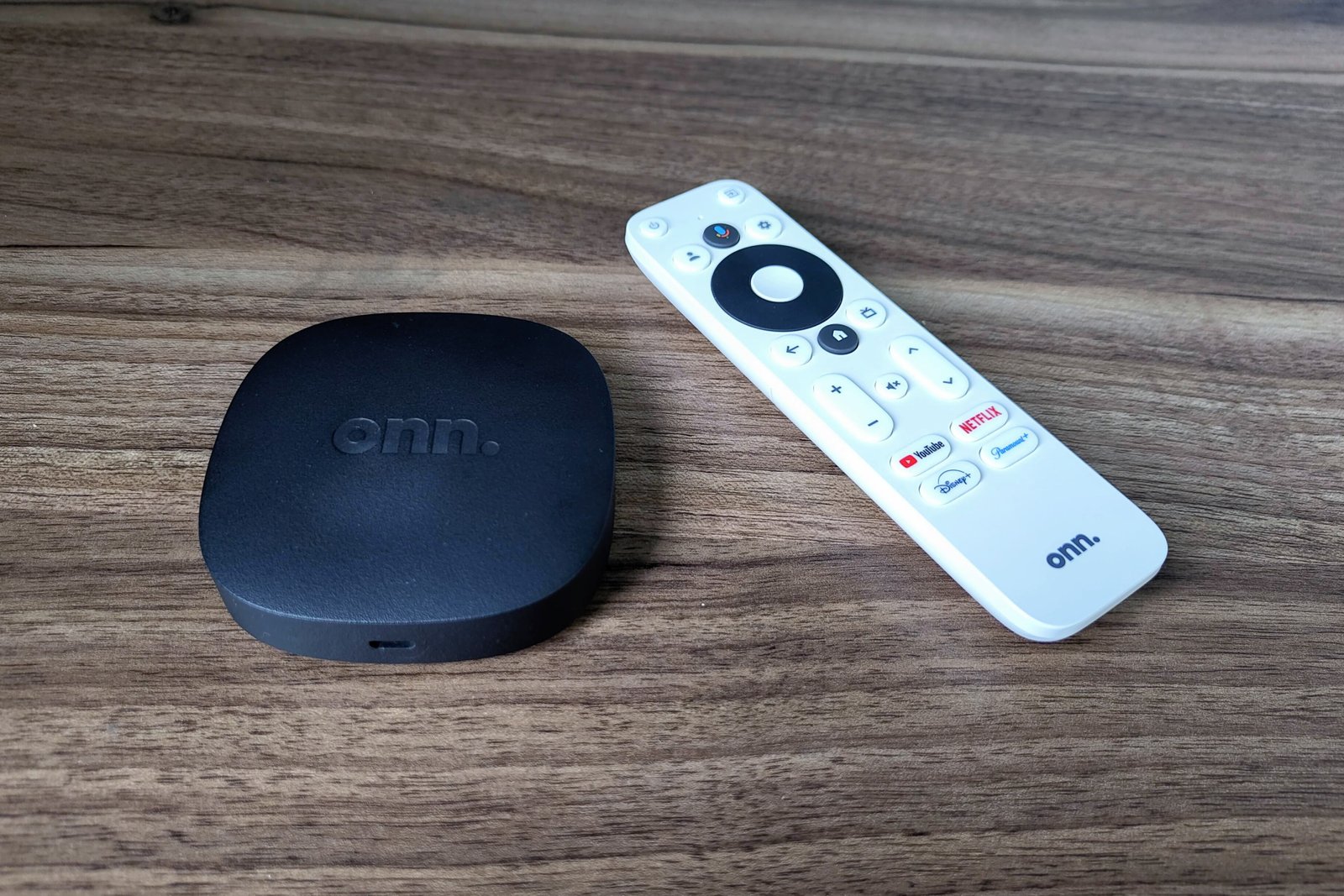
Pros
- Feature-rich remote
- Google TV software makes sense of streaming
- Super cheap even without sale prices
Cons
- Spotty performance
- No Dolby Vision or Atmos
- Google TV guide has some blind spots
Price When Reviewed:
Not available in the UK
Best Prices Today:

Who should buy the Walmart Onn 4K Streaming Box?
Those who are deeply invested in Google’s ecosystem will appreciate this budget streaming option, and it may also appeal to tech enthusiasts who want to sideload Android apps or remap the remote control’s buttons. Unless you need Dolby Vision and Atmos support, this is a better buy than Google’s own 4K Chromecast dongle.
Walmart Onn 4K Streaming Box: Further considerations
At a regular price of $20, Walmart’s 4K streaming puck is an unbeatable value, and its button-packed remote has handy shortcuts to the settings menu, live TV guide, and even an input switcher. It runs Google TV, whose home screen does an excellent job recommending movies and shows to watch. It also plays nicely with various Google services, so you can use Google Photos albums as screensavers, control Google Home devices with the voice remote, and play music across your TV and other Chromecast devices at the same time.
Read our full
Walmart Onn 4K Google TV Streaming Box (2023 model) review
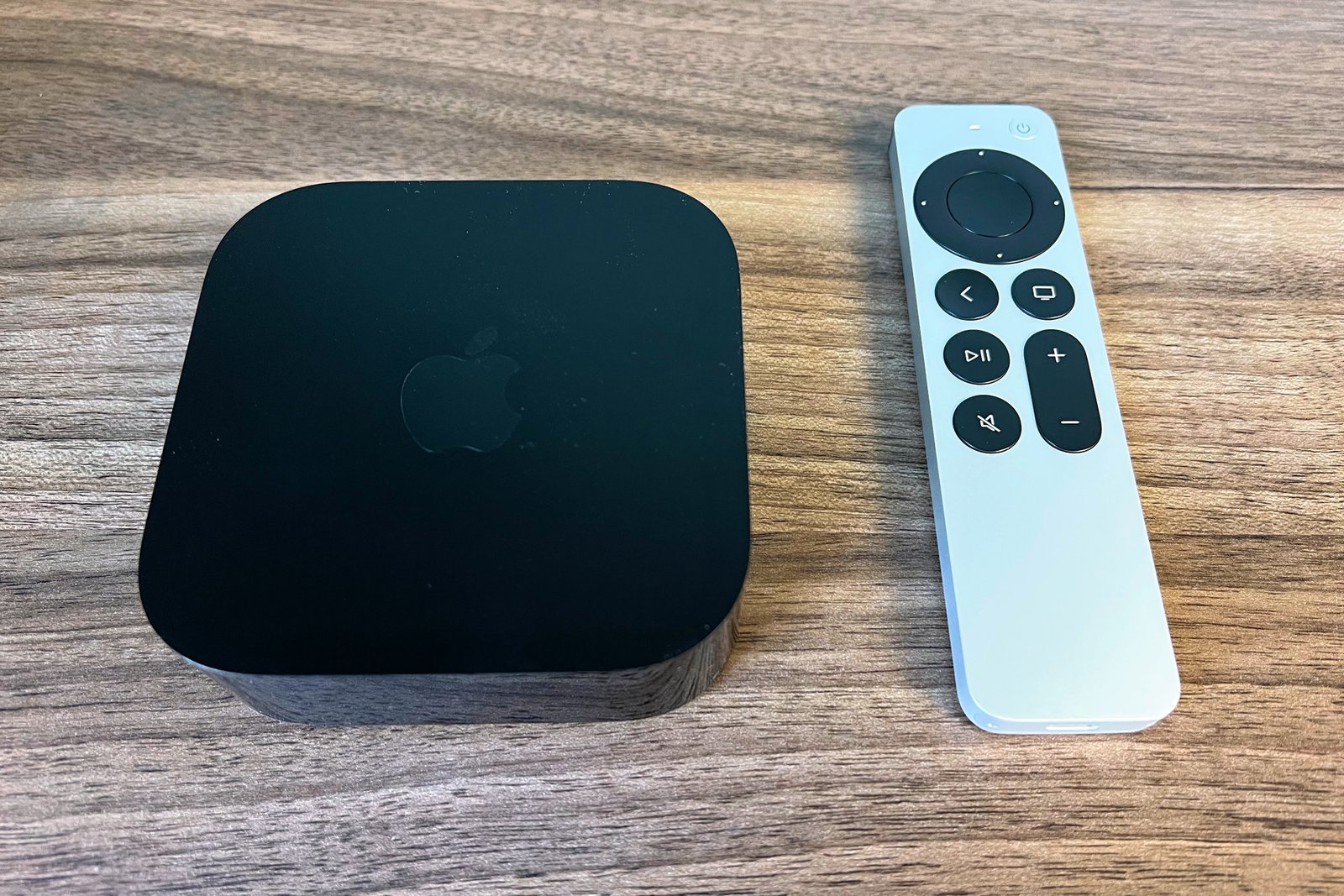
Pros
- Uncluttered, ad-free interface
- Performance is speedier than ever
- AirPlay, AirPods, and iCloud integration
Cons
- Dual home screens can be confusing
- Remote gesture controls might confound some users
- Still a tad pricey
Price When Reviewed:
£149
Who should buy the Apple TV 4K?
The Apple TV 4K is nearly thrice the price of capable streaming dongles from other companies, so it’s not going to be for everyone, but it’s a worthwhile splurge for your main TV. Additional benefits also accrue to folks who are deeply invested in Apple’s ecosystem, with features like iCloud Photos screensavers and simple pairing with AirPods for private listening. This model provides Wi-Fi connectivity only. If you want it hardwired to your network, you’ll need to step up to the $149 128GB model.
Apple TV 4K: Further considerations
No other streaming device can touch the Apple TV 4K’s speed, fluidity, and overall feeling of classiness. The aluminum remote is slick, the home screen is free of obnoxious banner ads, and the tvOS software is brimming with useful features. (One underrated example: Inputting passwords by dictating each letter into the voice remote.) Apple’s TV app is a highlight as well, as it helps you save shows for later and jump directly back into what you’ve been watching in most apps. At $129, the third-gen model has a lower price than its predecessors, and it’s no longer out-of-whack with other high-end streamers despite being better in almost every way.
Read our full
Apple TV 4K (3rd-generation, 2022) (64GB, model A2737) review
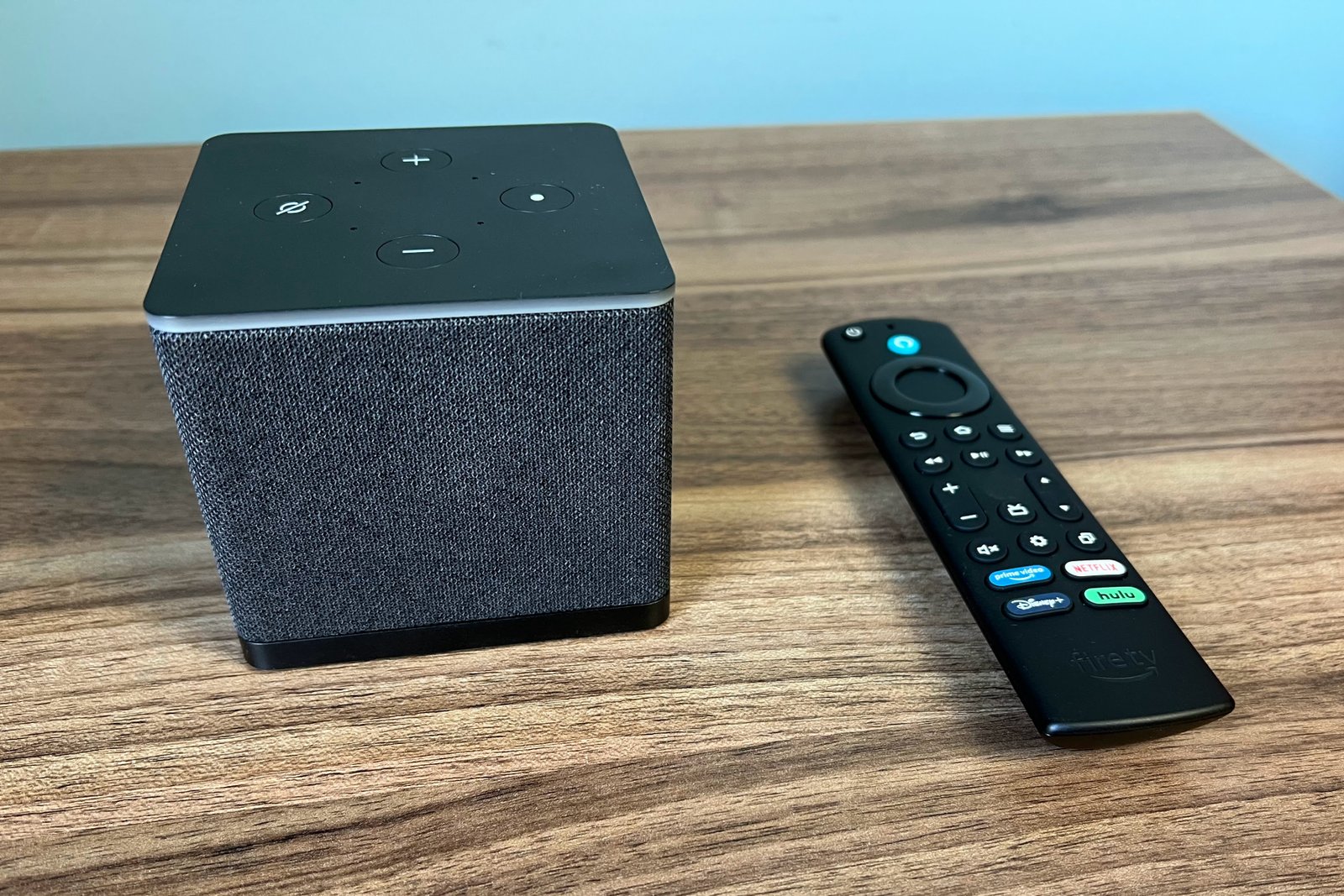
Pros
- Unparalleled voice control features
- Powerful remote; the “Recents” button is a revelation
- Super-fast app load times
Cons
- The home screen is a disaster
- Upscaling isn’t a major improvement
- Costs more than most other high-end streaming boxes
Price When Reviewed:
£139.99
Who should buy the Fire TV Cube (3rd gen)?
For anyone who’s unable to use a traditional TV remote, the Fire TV Cube is without peer. Voice control is also just a handy way to avoid Amazon’s chaotic, ad-ridden home screen. For smart home owners in the Alexa ecosystem, this box will eliminate the need to have an Alexa speaker in their home theater.
Fire TV Cube (3rd gen): Further considerations
Amazon’s high-end streaming box is a niche pick, but it’s the only streaming device that you can control entirely by voice. With its built-in far-field microphones, you can use “Alexa” voice commands to launch programs, scroll through menus, select highlighted items, and jump back to the home screen. It’s also Amazon’s speediest streamer by a wide margin.
Read our full
Amazon Fire TV Cube (3rd Gen) review
Other streaming devices tested
Amazon’s Fire TV Stick, Fire TV Stick 4K, and Fire TV Stick 4K Max are all strong values, especially when they’re on sale, but their menu systems are difficult to navigate and bogged down by advertising; the Fire TV Stick Lite should be avoided by pretty much everyone; the Roku Ultra may appeal to Roku fans who want ethernet connectivity, USB media playback, and Bluetooth; the speedy and feature-packed Nvidia Shield TV and Shield TV Pro have devoted fanbases, but for most folks, we hesitate to recommend a device that is now more than five years old; the high-end Google TV Streamer does little to distinguish itself from cheaper options; and the TiVo Stream 4K is no longer worth considering as TiVo focuses more on smart TV software now.
Our testing involves using the streaming devices to play a variety of programs, switching between apps to measure load times, and comparing the availability of various features. We pay special attention to remote control functionality—as this is the primary way people interact with their televisions—along with the orderliness and efficiency of each device’s menu system.
Preference in streaming platforms is inherently subjective, but we make sure to flag things that users are sure to dislike, such as overly aggressive advertising or promotional content that gets in the way of watching your desired shows.
Why you should trust us
TechHive’s editors and contributors have tested practically every streaming device that’s come out over the past decade, and we regularly evaluate the latest hardware, along with their accompanying remotes and mobile apps. We’ve checked out budget streaming sticks, feature-packed streaming boxes, streaming devices that can control other A/V hardware, and more. You can trust us to guide you to the right media streaming device for your needs.
Who curated this article?
A cord-cutter since 2008, Jared Newman has been a freelance technology journalist for more than 15 years and is a regular contributor to PCWorld, Fast Company, and TechHive, where he’s written a weekly cord-cutting column since 2014. His Cord Cutter Weekly newsletter has more than 30,000 subscribers, and his Advisorator tech advice newsletter is read by nearly 10,000 people each week. Jared has a master’s degree in journalism from NYU and specializes in making complex tech topics easy to understand, from streaming and cord-cutting to neat apps and useful tech tricks. He is based in Cincinnati, OH.
Picking the right streaming player involves more than just comparing prices. Here are the top features to look for when shopping for a streaming device.
Video quality
Pretty much all streaming players today output video in two basic formats: HD (720p or 1080p) or 4K, with budget streaming devices usually restricted to HD-only quality. If you only have a 720p or 1080p-capable TV, save your money and stick with an HD-quality streaming player. Have a 4K TV? If so, you’ll want a 4K streaming device to take advantage of your TV’s 4K panel.
HDR
HDR, short for “high dynamic range,” is a feature that boosts the difference between the darkest parts of the image and the brightest, good for making the image really pop. HDR10 is the garden-variety version of HDR, while two other enhanced versions—HDR10+ (an open-source HDR format favored by Samsung) and Dolby Vision (Dolby’s proprietary HDR format) up the ante with scene-by-scene and even frame-by-frame HDR grading. The short version is that HDR is good, HDR10+ and Dolby Vision are better.
If your TV supports some or all of these HDR formats, look for a streamer that matches your TV’s HDR capabilities. Budget 4K streamers can generally only handle HDR10, while pricier models will do either Dolby Atmos or HDR10+, or perhaps even both.
Dolby Atmos
Besides Dolby Vision, many streaming devices also support Dolby Atmos, and “object-based” audio format that can—with a compatible TV or A/V receiver—put you in an immersive bubble of sound. Budget streaming players often won’t decode Dolby Atmos streams on their own. That said, be sure to read the fine print; some of Roku’s cheapest streamers, for example, offer Dolby Atmos passthrough, meaning they can pass along the Atmos signal to an Atmos-compatible A/V component.
Storage
Streaming players come with a variety of storage options, ranging anywhere from 8GB or so to 128GB and up. Storage comes into play when it comes to streaming apps; the more storage you have, the more streaming apps you can install. Most streaming apps are so small that even a meager 8GB may be enough. But if you want to install lots of apps or even games on your streaming player (the Apple TV 4K has a robust gaming library, for example), the more storage, the better.
Connectivity
Hate buffering? Then pay attention to connectivity when shopping for a streaming player. Dual-band 2.4/5GHz Wi-Fi is essential when it comes to smooth 4K streaming. Wired is even better, and the best streaming players will have wired ethernet connections.
Platform
There are four basic platforms when it comes to streaming players: Amazon’s Fire TV, Apple’s tvOS, Google TV, and Roku OS. All have their pluses and minuses, and the selection of apps for one streaming platform may differ from that of another. More importantly, some streaming platforms may be more—or less—compatible with the devices you have at home. If you’re an Apple household, for example, and Apple TV 4K will work well alongside your iPhones and Macs, while a Google TV will be better suited to Android devices.
Remote
While most streaming players can be controlled with an app, a remote is easier to use when lounging on the sofa. The best streaming remotes will have backlit keys, and voice control lets you search for shows using voice commands. We also like remote finders that help you locate stray remote controls that have slipped between sofa cushions.
1.
What is the best streaming video player?
We believe the Roku Streaming Stick 4K is the best streaming video player for more people. It boasts peppy performance, an easy-to-use interface, a huge selection of streaming apps, and support for Apple’s AirPlay casting functionality. Best of all, the price ($50 list, but frequently discounted) is right.
2.
What is the best budget media streaming player?
The Walmart Onn 4K Google TV Streaming Box packs a lot of punch for just $20, including 4K streaming with HDR, a feature-rich voice remote, and the impressive Google TV interface.
3.
Are streaming boxes better than streaming sticks?
Set-top boxes tend to be faster, but streaming sticks have come a long way on performance while still costing a lot less.
4.
Can I control my soundbar or A/V receiver with a streaming remote?
Most streaming devices can control external soundbars and receivers over HDMI-CEC. But if your sound system requires infrared control, be sure to choose a streaming device that supports this. (Roku players, notably, do not.) Otherwise you’ll need to juggle separate remotes.
5.
Can I cast or mirror my smartphone screen to a streaming device?
Apple TV and Roku devices support AirPlay, which allows you to stream audio and video from iPhones, iPads, and Macs. Google TV devices support Chromecast, which lets you play content from supported iOS and Android apps, but only allows for full-screen mirroring from Android devices and the Chrome browser.
6.
What can I connect to a streaming device?
Some streaming devices offer ethernet ports or ethernet adapters, which can be more reliable than Wi-Fi if your home is set up for wired ethernet. Streaming devices with USB ports can also be useful for playing media from external drives or using wired game controllers.
7.
Can I use headphones with my streaming device?
Most streaming devices support Bluetooth headphones and earbuds, with the exception of Roku’s Streaming Sticks and Express players. That said, you can use Roku’s mobile app to listen privately through headphones instead.
8.
Which streaming device has the best app selection?
These days, it’s rare to see any major gaps in app support on the major streaming platforms. That said, some live TV streaming services work better with specific streaming devices on features like launching channels by voice and finding content from the home screen.
9.
Can I use a streaming device while traveling?
Yes. Roku, Fire TV, and Apple TV streaming devices even have captive portal support, so you can log into guest Wi-Fi networks that have a web-based confirmation page. That doesn’t necessarily mean you can use every streaming service while traveling. Hulu + Live TV, for example, doesn’t allow you to use the service away from your primary residence.
10.
How much storage do I need on my streaming device?
All major streaming platforms now have the ability to automatically offload apps that you haven’t used in a while, making storage less of a concern than it once was. That said, the Fire TV Stick 4K Max and Fire TV Cube have 16GB of storage, which should be more than enough for streaming apps, and the Apple TV 4K has 64GB of storage in its base model. You’d only need more than that for gaming.
Author: Jared Newman, Contributor

Jared has been a freelance technology journalist for more than 15 years and is a regular contributor to PCWorld, Fast Company, and TechHive, where he’s written a weekly cord-cutting column since 2014. His Cord Cutter Weekly newsletter has more than 30,000 subscribers, and his Advisorator tech advice newsletter is read by nearly 10,000 people each week. Jared has a master’s degree in journalism from NYU and specializes in making complex tech topics easy to understand, from streaming and cord-cutting to neat apps and useful tech tricks. He is based in Cincinnati, OH.


